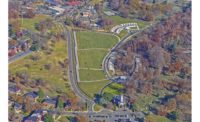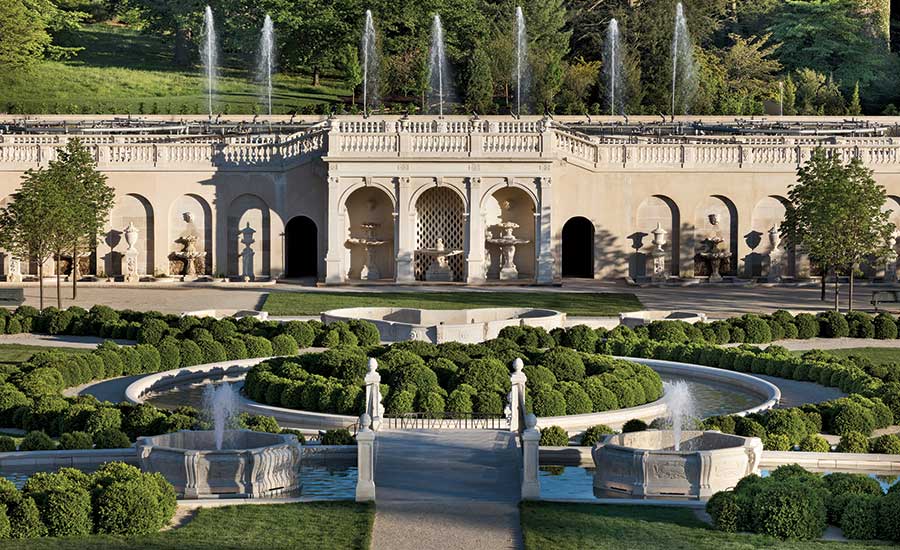ENR MidAtlantic 2018 Best Projects
Best Landscape Hardscape Urban Development: Longwood Gardens Main Fountain Garden Revitalization

The new fountain system has 1,719 jets and streams that enable the water to reach up to 175 ft in the air. The system also can be programmed to produce fountain, light and sound shows.
Photos by John Bartelstone Photography LLC, courtesy of Keast & Hood Co.





Longwood Gardens Main Fountain Garden Revitalization
Kennett Square, Pa.
Best Project
Owner: Longwood Gardens
Lead Design Firm: Beyer Blinder Belle
General Contractor: Bancroft Construction Co.
Civil Engineer: Urban Engineers
Structural Engineer: Keast & Hood Co.
MEP Engineer: Urban Engineers
Landscape Architect: West 8
Fountain Designer: Fluidity Design Consultants
Fountain Consultant: Outside the Lines Inc.
Subcontractors: Dan Lepore and Sons (Masonry); Duffield Associates (Soil and Concrete Testing); ECS Mid-Atlantic (3rd Party Testing); Integrated Conservation Resources (Conservator); Irrigation Consulting; Jaffe Holden (Sound Consultant); L’Observatoire International (Lighting Consultant)
The $90-million rehabilitation of Longwood Gardens’ Main Fountain Garden addressed chronic mechanical problems, aging infrastructure and limited visitor access while restoring the garden’s 1930s architectural character. To improve the fountain’s infrastructure, the systems were extensively upgraded, which included two new underground pump rooms.
Workers now can more easily gain access to the fountains through a series of subterranean service tunnels, which are located beneath the water features and connect the two pump rooms.
A main design feature is the new fountain system with 1,719 jets and streams that enable the water to reach up to 175 ft in the air. The system also can be programmed to produce fountain, light and sound shows. The project’s greatest challenges included the coordination, documentation and organization of more than 5,000 individual stone elements.
The team created a massive database of before-and-after photographs, piece dimensions, matching historic locations and detailed stone repair logs, which architects, conservators, stone masons and contractors could use.
During heavy excavation and underground work, limestone units had to be disassembled, crated and trucked to an offsite warehouse for restoration. Each stone element was given an alphanumeric code that corresponded with its location on the site. Every crate containing stone was labeled with a laminated QR code, enabling the project team to identify, locate and catalogue all tagged crates by scanning the code attached to each crate.
Stone cleaning and restoration consisted of water misting and micro-abrasive cleaning using dolomite powder and D/2 biological solution. Stone repair methods included cementitious patching, grouted crack repairs, pinned crack repairs, stone dutchmen and full stone replacements. The masonry contractor used stone carvers from around the U.S. to hand carve the limestone and replicate details of the original stone and perform nearly 3,000 individual stone repairs.
Extensive 3D modeling included a point cloud scan that captured existing site conditions. Modeling of historic stone pieces permitted robotic carving of the replacement limestone pieces. Fountain system visualization through the model showed designers how water would flow and how lighting effects could be programmed.
The construction team used a variety of connected devices and sensors to communicate progress. Sensors monitored security, quality control and damage prevention. Monitors maintained critical temperatures and humidity levels, allowing the team to make adjustments when levels exceeded acceptable parameters. A combination of leak-detection sensors and cameras monitored tunnels during the installation of underground structures to ensure that dewatering systems functioned properly.
Drone photography and videography were used to monitor progress. Up-to-date images could be sent to subcontractor and owner meetings to assist in communicating onsite conditions.
Beyond its notable complexity and use of technology, one judge lauded the Main Fountain Garden as “a gorgeous project.”
Related Article: ENR MidAtlantic's 2018 Best Projects: Region’s Top Work Sets High Bar




